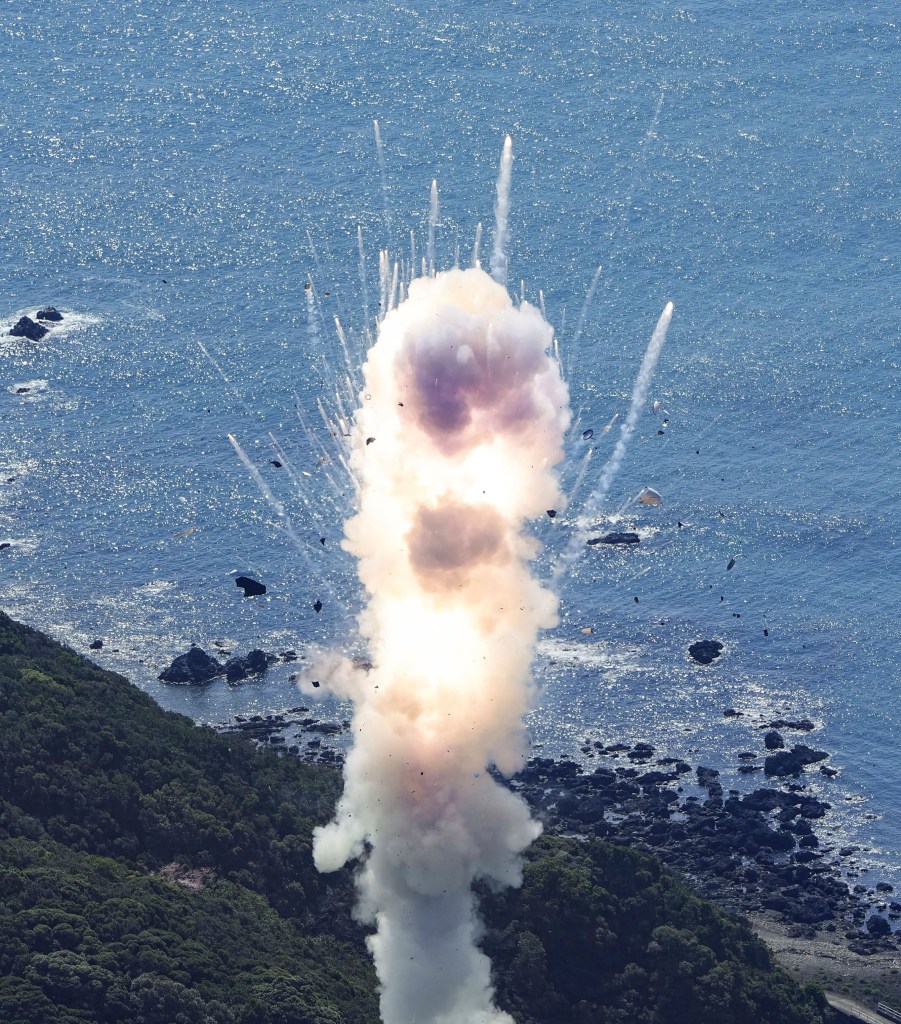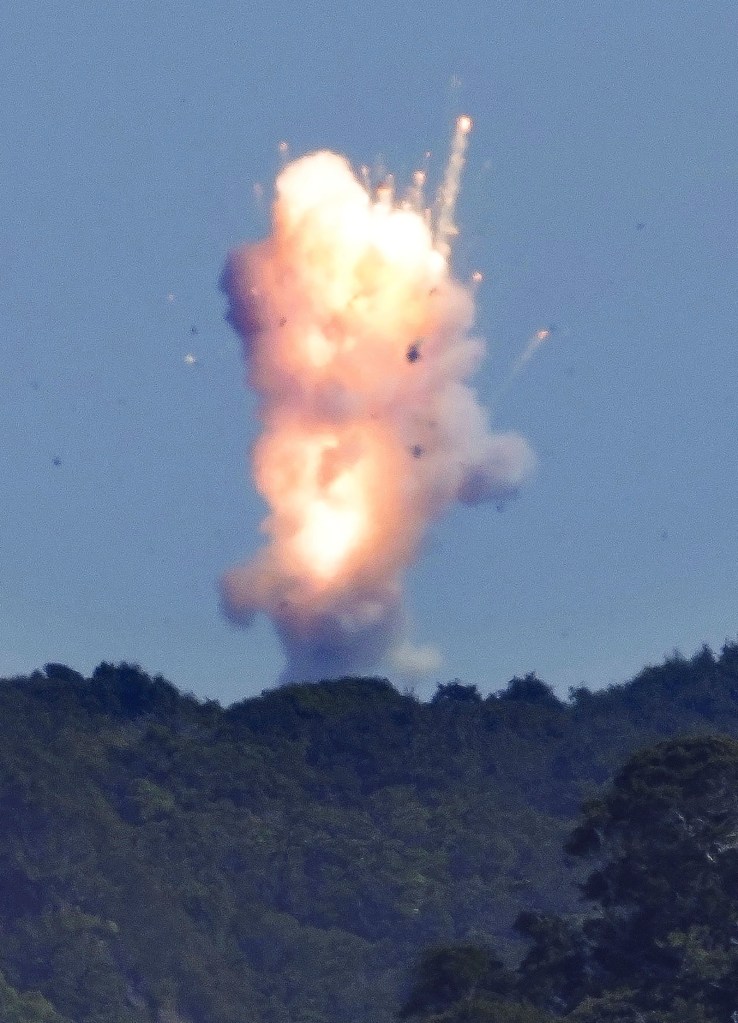Japan’s Space One Kairos rocket explodes just seconds into inaugural flight
Contact The Author
A Japanese solid-fuel rocket exploded mere seconds into its inaugural launch in a major setback for the country’s quest to reach space as private firm Space One tried to become the country’s first company to put a satellite in orbit.
Kairos, the 59-foot-tall spacecraft, lifted off at 11:01 a.m. in the mountainous Kii Peninsula in western Japan on Wednesday
Five seconds after Kairos left its launch pad, the middle of the rocket let out a large explosion, and the unoccupied craft burst into a ball of fire and smoke.
Kairos, or the Kii-based Advanced & Instant Rocket System, was carrying an experimental government satellite that would have temporarily replaced intelligence satellites if they fell out of orbit.
Space One said it “terminated the flight” after launch and was investigating the flight data.
Debris from the explosion eventually fell into the mountain and sea below.
A problem triggered the autonomous flight termination system, Shuhei Kishimoto, governor of the local Wakayama government, said after being briefed by officials.
Kishimoto did not clarify the problem that caused the flight termination system to be activated.
Kairos was designed and built to be highly automated, which included the flight termination system.
A crew of approximately a dozen workers was required to staff the nearby launch control center.
No injuries were reported near the launch site and a fire that broke out from the explosion has since been extinguished.
Space One was created in 2018 from an integration of several companies, including Canon Electronics, engineering corporation IHI, and the state-backed Development Bank of Japan.
The company was founded as an “easy and affordable” space launch provider to get clients’ business to space, according to its website.
“With our dedicated launcher and launch site, we will minimize the cost of putting satellites into orbit and help further expand space businesses,” the company’s mission statement reads.
The rocket is composed of three stages of solid-fuel engines and a liquid-fuel post-boost engine, attempting to carry payloads of up to 250 kg (550 pounds) to low-Earth orbit.
The launch was originally scheduled for last Saturday but was pushed back to Wednesday because a ship had entered the restricted area in the nearby sea.
The Spaceport Kii is located in Kushimoto, Wakayama prefecture, approximately 136 miles southeast of Osaka.
Space One’s rigorous, low-cost plans include the “shortest launch operation” and the “world’s highest frequency of launches (more than 20 per year).”
Space One does not disclose Kairos’ launch costs, but company executive Kozo Abe said it is “competitive enough” against American rival Rocket Lab.
Rocket Lab has launched over 40 Electron small rockets from New Zealand since 2017 at roughly $7 million per flight.
Wednesday’s explosion is the latest mishap to plague Japan’s relatively young space ambitions.
Start your day with all you need to know
Morning Report delivers the latest news, videos, photos and more.
Thanks for signing up!
Last July, the Japan Aerospace Exploration Agency’s Epsilon S Engine exploded a minute into a test of the second-stage engine.
The agency’s medium-lift H-3 rocket was ordered to self-destruct on its debut flight last March when its second-stage engine did not ignite as planned.
The H-3 is scheduled to deliver 20 satellites and probes to space by 2030.
The space agency has seen its share of victories, having landed its first lunar probe on the moon on January 13, but took over a month to re-establish connection after it tipped over upon landing.
When the Smart Lander for Investigating Moon touched down on the lunar surface on January 13, it made Japan the fifth country to put a probe on the moon.
With Post wires





















